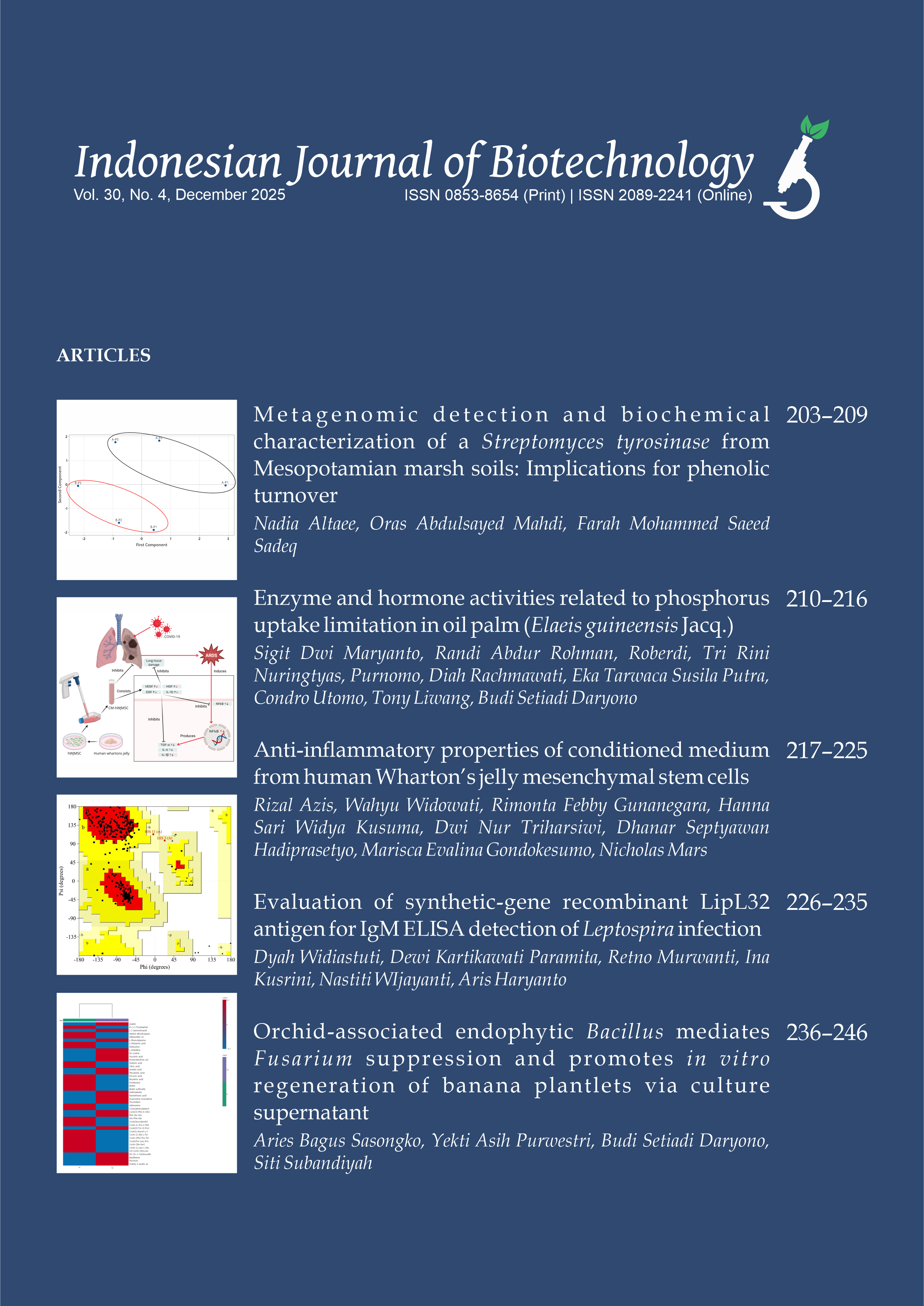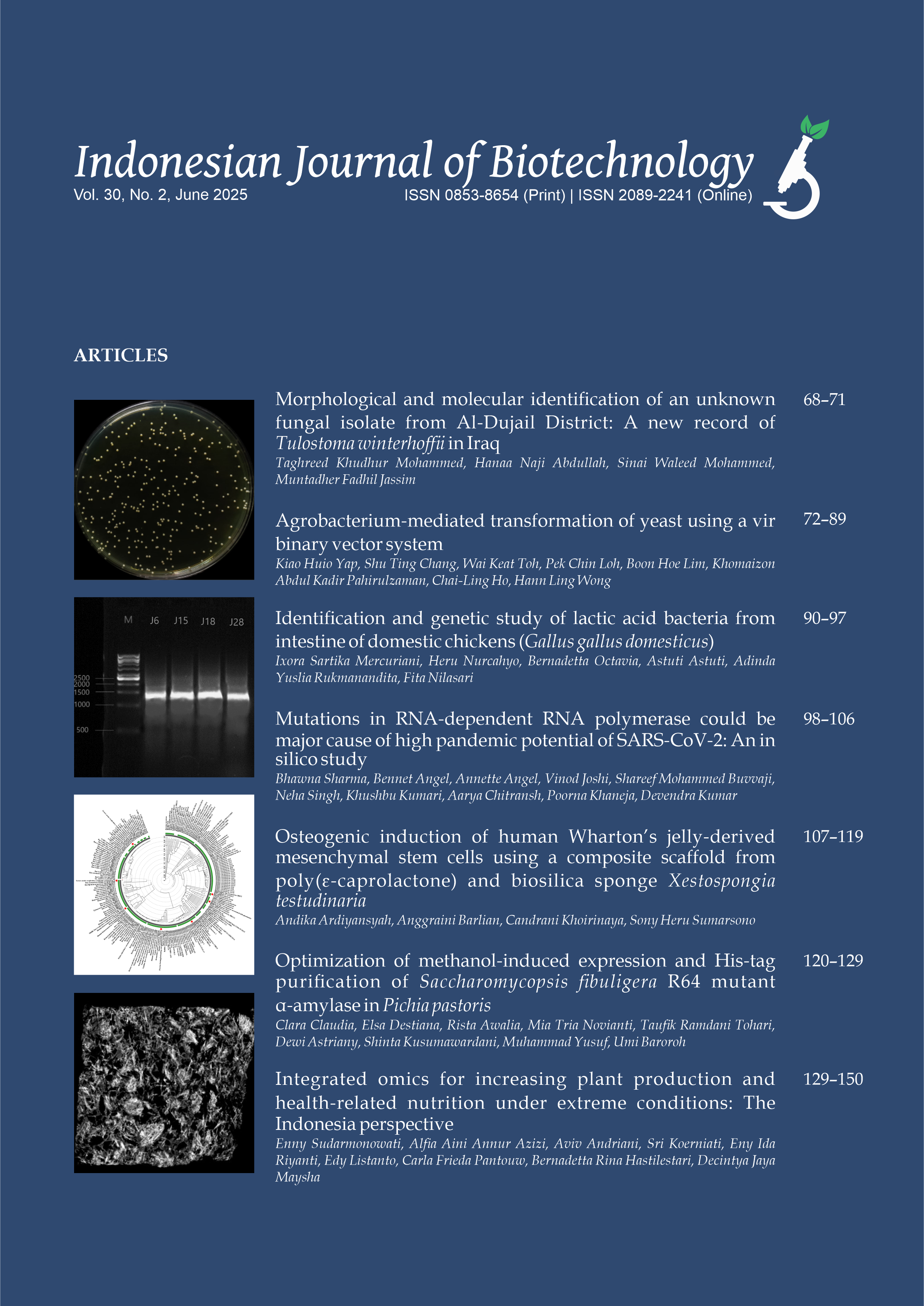Comparative Analysis of Genes Induced by Respiratory Syncytial Virus and DsRNA in Human Epithelial Cells
Gino Valentino Limmon(1*)
(1)
(*) Corresponding Author
Abstract
Epithelial cells are the primary target of respiratory viral infections and play a pivotal role in virusinducedlung infl ammation and in anti viral immune response. A common signal for the presence of viralinfections and induction of infl ammation is recognition of double stranded RNA (dsRNA). Thus far, therehas not been a high-throughput transcrptome analysis of RSV- or dsRNA-induced genes in primary humanbronchial epithelial cells (PHBE), nor there has been a comparison between dsRNA- and RSV-inducedgenes. To establish the transcriptome profi les and to determine the contribution of dsRNA in the inductionof infl ammation during respiratory virus infection, we compared the gene expression profi les of PHBE cellsthat were infected with Respiratory Syncytial Virus (RSV) or were treated with dsRNA. Our transcriptomeanalysis showed that RSV infection and and dsRNA treatment induced up-regulation of 2024 and 159 genesin PHBE respectively. Comparison of genes revealed that RSV and dsRNA commonly induced 75 genes inPHBE cells. The common up-regulated genes were functionally grouped in multiple response pathwaysinvolved in infl ammation and immune responses. Interestingly, there were several previously unreportedgenes that were up-regulated in primary human epithelial cells that are relevant to a TH2 allergic phenotype.This comparison of a high-throughput gene expression study offers a comprehensive view of transcriptionalchanges induced by dsRNA and RSV, and importantly compares dsRNA-induced genes with RSV-inducedgenes in PHBE cells. Keywords: RSV, dsRNA, transcriptome, immune response, infl ammation
Keywords
RSV; dsRNA; transcriptome; immune response; inflammation
Full Text:
PDFArticle Metrics
Refbacks
- There are currently no refbacks.
Copyright (c) 2015 Indonesian Journal of Biotechnology









